






 |
|||||||
 |
 |
 |
 |
 |
|||
 |
|||||||
|
Roger Modjeski's Music Reference OTL-1 This amplifier is the result of over 30 years of thinking about OTL amplifiers, something most designers think of not at all. OTL amplifiers are special things and are not “in the tube manuals” where most amplifier designers begin their products. Previous OTL designs have attempted to achieve high power levels of 100 watts or more. This has made them complex and somewhat unreliable. To achieve these powers often takes eight output tubes per channel. This number of tubes produces a lot of heat and problems for the user. This is not one of those amps. This amplifier is the simplest circuit with the fewest tubes that has ever been made. It takes advantage of two important facts. 1. Small amplifiers used within their power range sound better than large amplifiers. This is simply because in the making of a large amplifier certain tradeoffs must be made to achieve the high power which often makes their low power range less than ideal. The first watt must be good for an amplifier to have high resolution. 2. We now have efficient speakers that can utilize low power amplifiers. Here is one of my luckiest audio finds so far, the Music Reference OTL-1. This is Roger Modjeski’s final masterpiece, a revolutionary Output Transformerless (OTL) design, 30 years in the making. This amplifier is the culmination of a legendary, visionary, world-famous audio designer’s 30 year personal journey, completed only a few years before his death. It is the amp he himself felt was his best sounding within its power rating. A truly pioneering design in an already super obscure corner of the audio pioneer…in all fairness Dear Reader, where do I go from here? It’s hard to imagine a bigger fish than this one. So buckle your seat belts, because this is going to be a long ride. If you’ve been around tubes and tube audio for a while, you’ve undoubtedly heard of Music Reference, RAM Labs and/or Roger Modjeski. They are icons of the tube audio world and their names are synonymous with quality and innovation. Roger Modjeski (1959-2019) was a prolific audio designer who has quite an impressive number of creative and successful designs to his name, and who apparently designed and built his first single ended amp at age six. One of his most famous amplifiers, the Music Reference RM-10, is a push pull EL-84 design that somehow generates 35 watts per channel (a little more than twice the power of any other push pull EL-84 design) from a pair of tubes per side. That one has been on my “buy” list for a while now, but I’m always too slow or too broke. The RM-200 is kind of a standard of the tube audio world, and is perhaps the most famous of the Music Reference products. But that could also be said about the RM-5 preamp, which is still in use in many systems today and is still a relevant design almost 30 years on. Through Music Reference, Roger built well designed equipment that lasts, and sold it with tubes that he meticulously graded and selected with RAM Labs, and the whole package is quality. Suffice to say that Roger is a legend who created so many musical sounding tube designs and who will be remembered for a long time to come, and I’m very pleased to have one of his last and perhaps greatest designs to share here today. I’m about to talk in detail about the sound qualities of an OTL amp, so just to catch everyone up on that, OTL means that the amp has no output transformers. It is “output transformer-less”. This is sort of an ideal place to be, as the output transformers on a tube amp are critical parts, and can easily be the weak spot that makes or breaks an amplifier’s sound quality. The best modern hand-wound output transformers are very expensive, see prices for new production Tamura iron, etc. And it's a disappearing art form, with the old guard being long gone. One of the reasons vintage output iron is so desirable is that the handwork for a single pair of output transformers is difficult and time consuming, and those older transformers were likely made by craftsmen who had hand-wound hundreds or even thousands of transformers, and really knew what they were doing. Nothing like that exists at large scale today. But the reason its important here is that by eliminating the output transformer, you bypass its distortion and limitations and essentially connect the tubes directly to the speaker cone. This is difficult to do in the real world with all that pesky Physics, and normally it requires a large bank of tubes (think 4-16 tubes per side) to achieve acceptable power. As a result, OTL amps typically put out a lot of heat in their brute force design. Roger’s amp has neither of these faults; it uses only two tubes per channel and gets no hotter than a normal tube amplifier does, perhaps less so. Since I have no idea about the inner workings of this special amplifier, I don't want to say anything stupid about the technicalities of the design. Suffice to say that, “holy sh*t” this one sounds good! For those interested in the details, Roger wrote a white paper for the OTL-1 that can be found here. Getting the amp set up in my space, its apparent that this is a carefully crafted amplifier but not an over the top, industrial piece of gear, and despite the plate caps and their somewhat Frankensteinien look (that I really like) the amplifier looks like it belongs in a living room and not a laboratory. Built into a surplus RM-200 chassis, the OTL-1 does seem to have been basically just past a prototype in its production status, and I’ve been advised that there are only “around 6” of these amps out there. The amp features a standby mode, called “Forming” for some reason that must mean something, and a full power on mode. It uses a pair of super-obscure 26DQ5 power tubes per side, driven by the equally archaic 6GH8, which depending on the configuration allows the amp to provide between 3.5 to 10 watts per channel. There are an awful lot of choices for the speaker connections, with possibilities from 2 ohms to 32 ohms as well a pretty unique feature, an externally mounted feedback connection that can be positioned at any of the lugs for different gain effect. All in all it's a revolutionary piece of gear from one of the best minds in tube audio. So cutting to the chase, the sound: Transparency-wise this amp is “purer” sounding and more “immediate” than anything on these pages (so far). It has an amazing level of resolution and detail retrieval that is frankly breathtaking, with a big wide space, very low and controlled bass, and what seems to be a complete and total lack of distortion at volumes that well exceed what I would ever care to sit through. It’s been the lack of distortion that has been really eye opening for me in my time so far with the OTL-1, and now it's a little hard for me not to notice distortion in the playback of other amps, even my favorites. Roger’s amp is a tough act to follow from a clarity standpoint. Notes from my first evening spent with the OTL-1: Clarity. Purity. Smooth, detailed, precise, open, warm but not overly so, supersonic dynamics, tonally rich. Truthful. Incredibly pure and real sounding if you sit and pay attention. The material sometimes opens up and shows its space in a very pleasing way. Some specific listening impressions over time: Nic Jones: Candadee I O from Penguin Eggs: the texture and bends, snap, crackle and pop of his acoustic guitar are magically real and lifelike. Rikkie Lee Jones’s version of Show Biz Kids: quite a bit more subtlety at the beginning than I remember. Bass is wonderful. Backing voices distinct. YoYo Ma and the Silk Road Ensemble’s Distant Green Valley: This is music that my family have been enjoying seemingly forever and on just about every amp I’ve owned to date. Almost halfway through there is a big percussion event. I’ve never heard that part of the piece so palpable and detailed and filling real space; its haunting and fills the room wrapping around almost behind the listening position. Cranked WAY up and there is no distortion at all. It's a thrilling ride! (Side note: for comparison, Distant Green Valley on the 6BX7 is thinner and much less bass. The OTL nails this performance in a way the 6BX7 can’t even get close to, even though it also sounds awesome and involving.) Jorge Ben Xica Da Silkva: I’ve never heard it like this before. This track has always been a little problematic. On the OTL its alive. Really wonderful. Sabicas Fantasia Inca: Every detail is there spread out nicely, like you are almost inside the guitar. Some nuances that I haven’t heard well before are plain as day with the OTL-1, like the subtle differences in backing bass weight behind the treble as Sabicas stresses one part or another. Sabicas even made a mistake (!) I had never noticed before. Early Dylan, which is often so intimate but also somewhat painful with the bright harmonica and unique vocals, but through this amp it all smooths out, its real and live sounding and intimately involving. You can hear Bob’s vocal in a away I haven’t quite heard before. In Girl from the North Country for example, its so full and longing and sounds very much like a windswept young man who has rode the miles. You can hear his young maturity and innocence shining through. Tom Waits Big Joe and Phantom 309 from KPFK’s 1973 interview: it's a rough recording, another curveball, but sounds very real and present on the OTL. This is an amplifier that rewards the careful listener. At the time of writing, there are more than 80 tube amplifiers featured on this site. For the careful listener, for the person who wants to sit down, focus and listen…this amplifier will be more rewarding to that listener than anything I have owned to date. But in my experience the OTL-1 is not the amp I prefer for background music all day while working, or painting, or cooking, or doing. It can easily get to feel somewhat strident and over resolving, and I would choose another amplifier for hours of passive background listening. I’m still not sure what the OTL-1 is missing there, but I have experienced similar results on other super resolving amps like the Oliver Sayes dual chassis 801a or the FirstWatt F7. The resolution is thrilling but can feel overpowering. After many, many hours spent with the OTL-1, how does it compare to some others? Richard Becker’s Super Eaton 45 (coming soon) has most of the clarity of the OTL-1 but perhaps just a bit more mellowness, a quality that makes it easier to listen to passively. The McIntosh 225 has a more organic, living and breathing sound, but is no where near the resolver and image thrower that the OTL-1 is. The SE 6BX7 images a bit better than the OTL-1, which was kind of a surprise to me, but the OTL-1 has a bigger and richer bass response that gives the playback more grunt (plus its twice the power or more). Its been a long time, but I did own a Transcendent Sound Mini Beast OTL amp a few years ago, and would say that the sound is similar, but I think the OTL-1 has a warmer and more pleasing sound than the Transcendent did. Both are seriously resolving amplifiers though, which seems to be an OTL trait. Overall I would say that the Music Reference OTL-1 has a pretty unique sound quality. There isn’t much of a “glow” from the OTL-1; it lights up the material and shows the space superbly, the size of the venue, the echoes, etc. But it doesn't embellish at all. There isn’t a “pop on the vocals” that I hear in the 300B or a visceral grunt in the bass like a 45. Its so neutral, it just reports faithfully. This feels like what I imagine a very, very good solid-state amp sounds like. Somehow I feel like Nelson Pass would probably appreciate this one. Thinking that it would be interesting to hear one of the Pass amps next to the OTL-1, I picked up a used FirstWatt F7, admittedly a pretty unusual amplifier that probably doesn't represent the overall Pass sound, and although the F7 sounded quite good to me it’s flavor wasn't really like the OTL’s sound. Perhaps one of the more traditional Pass designs might be closer, or not? We’ll see one day I hope. Roger Modjeski’s revolutionary OTL-1 has certainly set the bar a little higher here for overall resolution, lack of distortion and “rightness” to my ears. It has an effortless quality that makes its playback feel so very natural and it holds your attention as it dives you very deep into the music. But I still find myself a bit on the fence. On the one hand, this is purity. On the other hand this is not quite warm enough for my total enjoyment. Does one sacrifice the other? Owning the Music Reference OTL-1 has been a very enlightening experience. Probably the most unique piece of equipment I’ve owned so far in this hobby, this one is certainly a high water mark for serious, focused listening. Hearing this amp and its superbly clean playback has changed the way I hear my other amps. It hasn't reduced them, but I hear them from a perspective that I didn’t have before. Although I will likely find I prefer a transformer-based amp in the long term, OTL technology definitely presents with a purity that is mesmerizing. What a treat it is to have owned an amplifier like this. Life has been good. Thanks for all of the hours of enjoyment Roger, your OTL is magnificent. |
||||||||
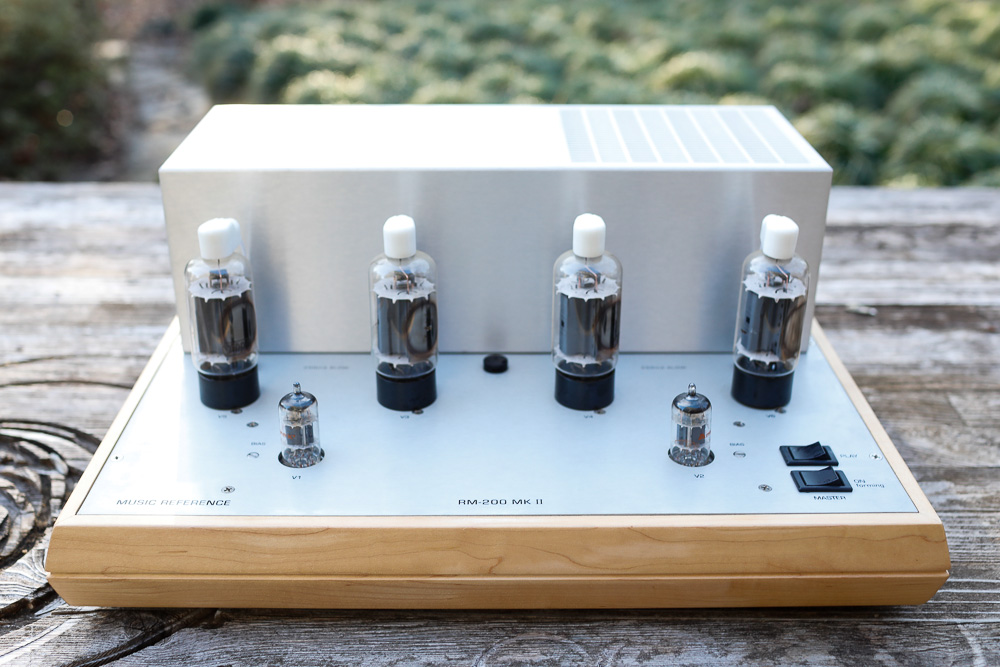
|
||||||||
|
The OTL-1, a Roger Modjeski masterpiece built into a surplus RM-200 chassis. An almost one of a kind amplfier from one of the great minds in modern tube audio. |
||||||||

|
||||||||
|
Music Reference seems to mean just that. |
||||||||

|
||||||||
|
I've always been fond of the plate cap look. One of my first tube amps, and one of the best sounding overall, was a Jim Nichols push pull 6BG6. This looks almost like a very clean version of that amp. |
||||||||
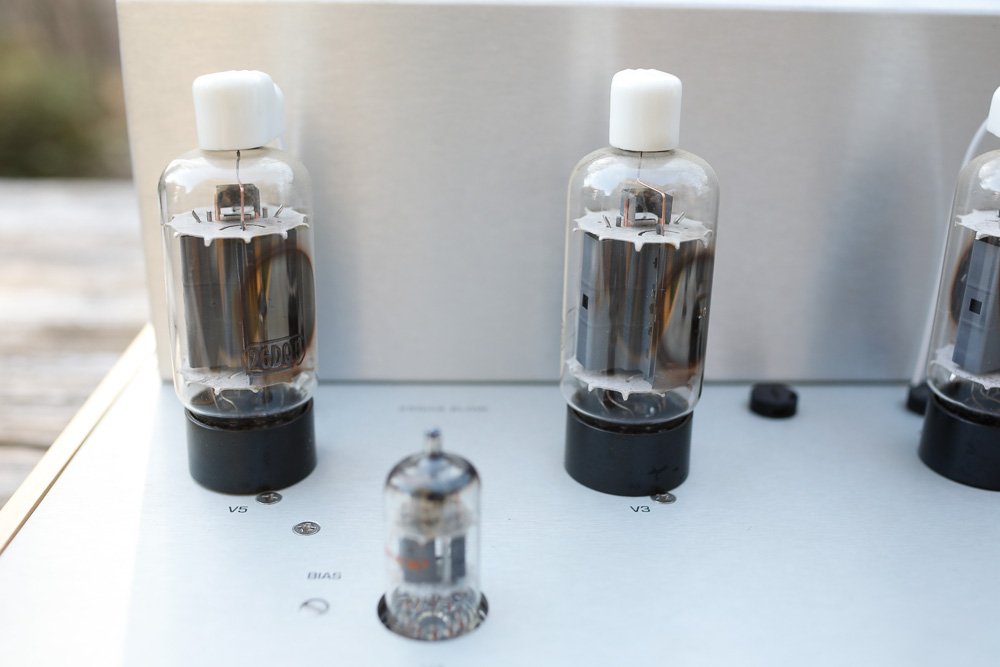
|
||||||||
|
26DQ6 was new to me. Apparently it was designed as TV sweep tube. |
||||||||
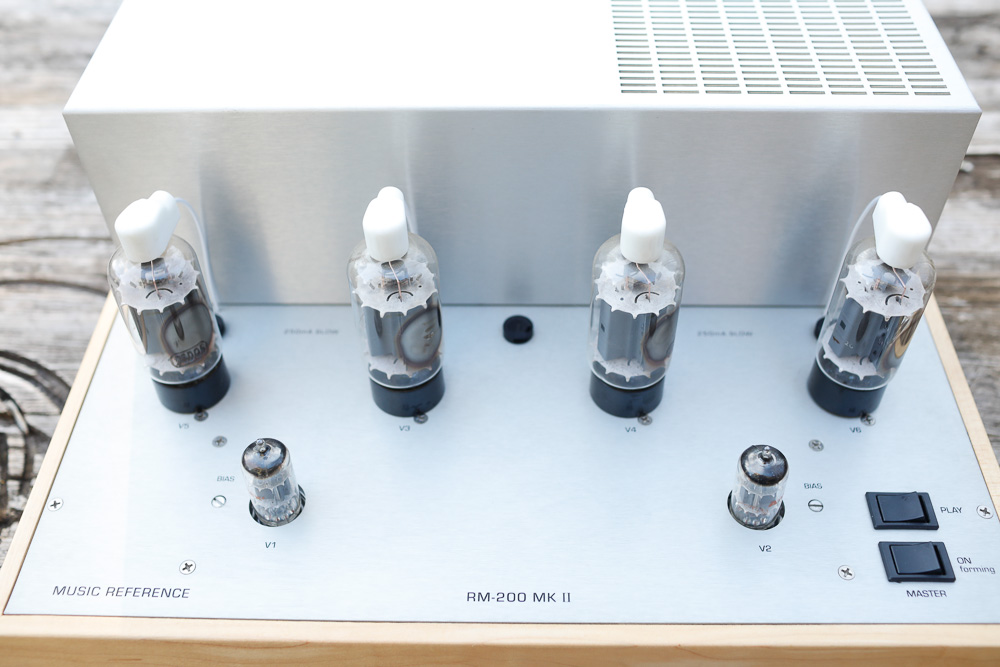
|
||||||||

|
||||||||
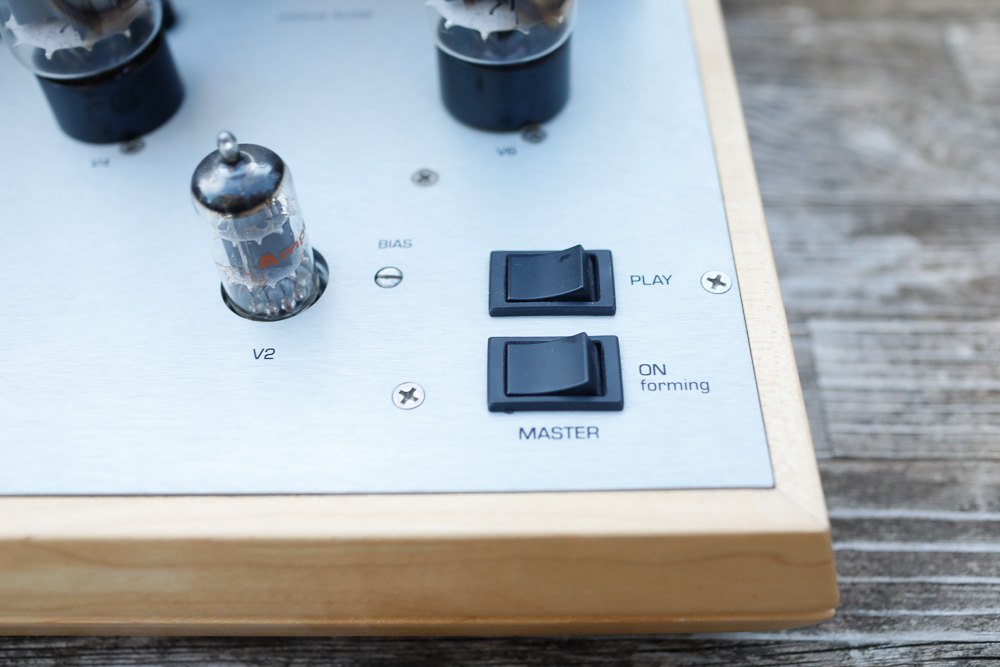
|
||||||||

|
||||||||
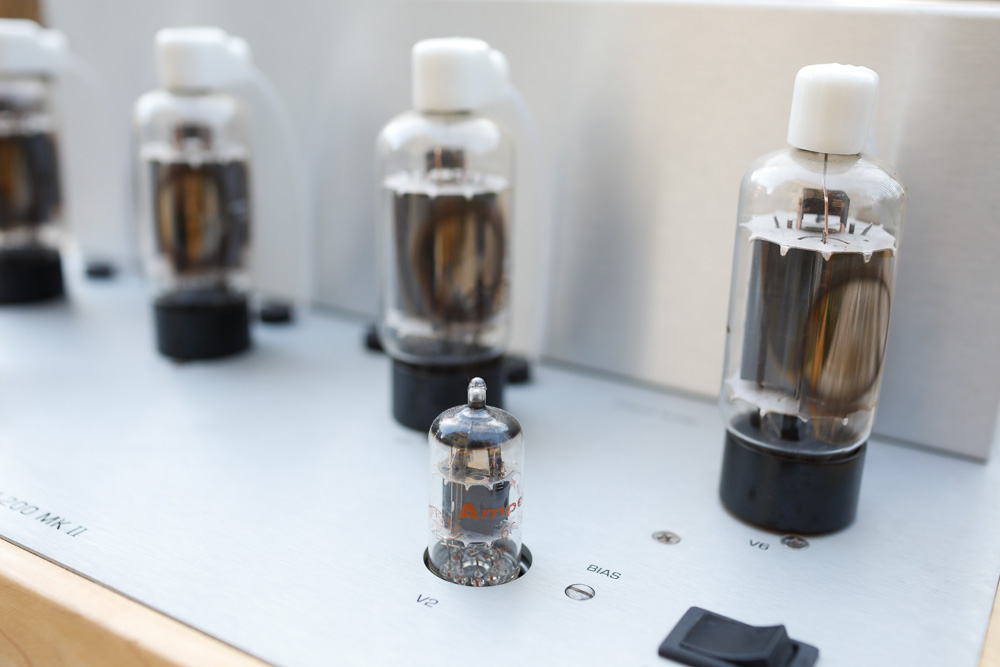
|
||||||||

|
||||||||

|
||||||||
|
Nice clean lines to this amp. |
||||||||

|
||||||||

|
||||||||

|
||||||||

|
||||||||
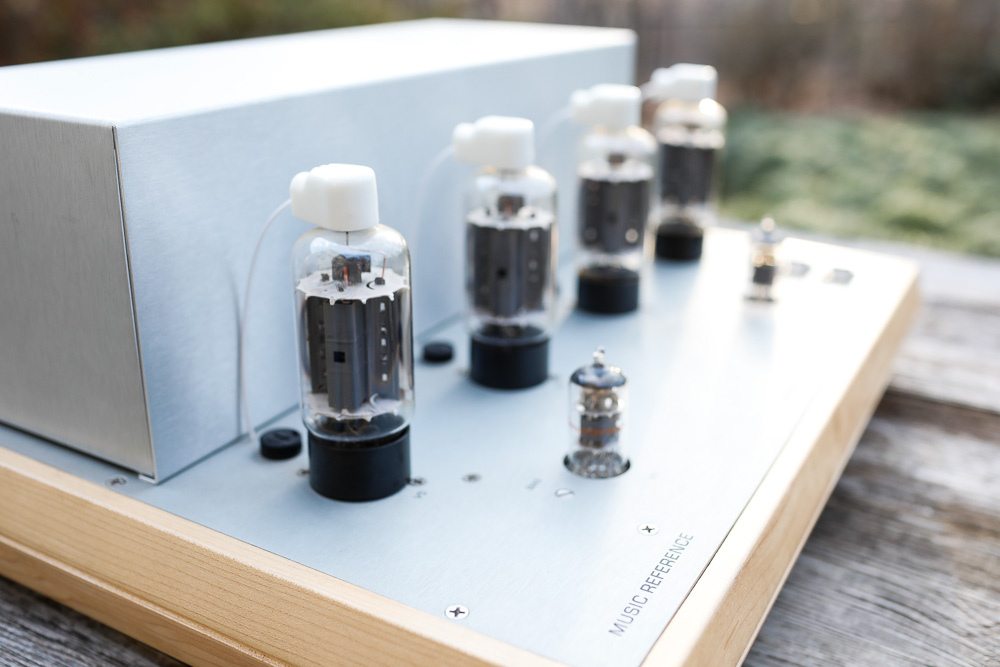
|
||||||||

|
||||||||

|
||||||||
|
This is a fairly complicated speaker binding post array as you can see, and it offers a lot of possibilities. The cable and lug is an external feedback adjustment, very unique. I haven’t experimented very much here, but in the user guide Roger states that playing with the way the speakers are hooked up and the feedback lug’s position will have a larger effect on the sound than cable changes. No need to turn the amp off while experimenting either, as the amp is stable without a load. The original owner changed the RCA connectors, the amp was built with balanced connections. |
||||||||
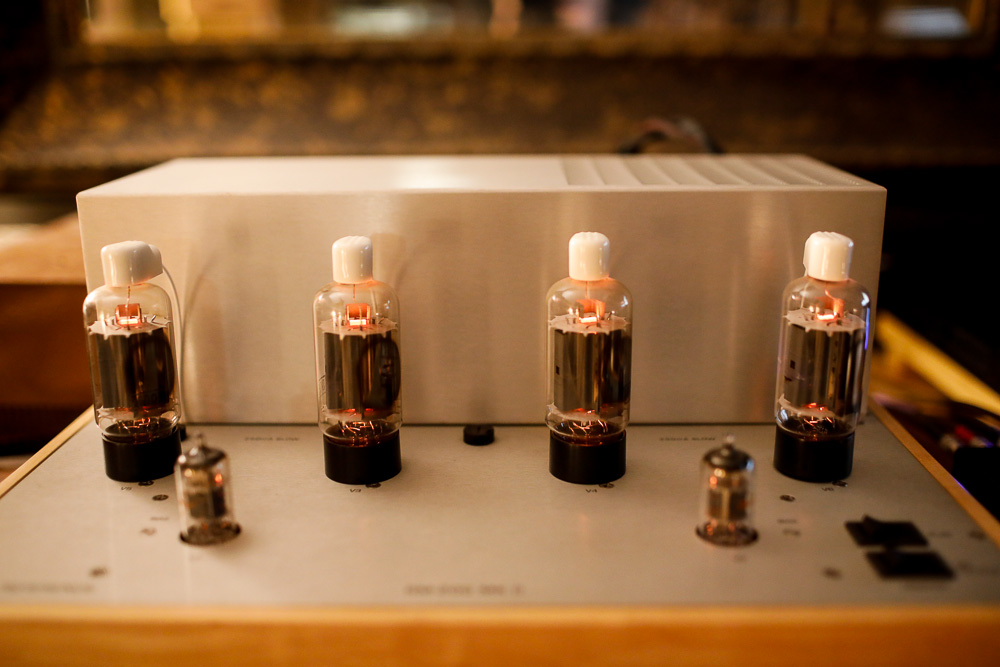
|
||||||||

|
||||||||
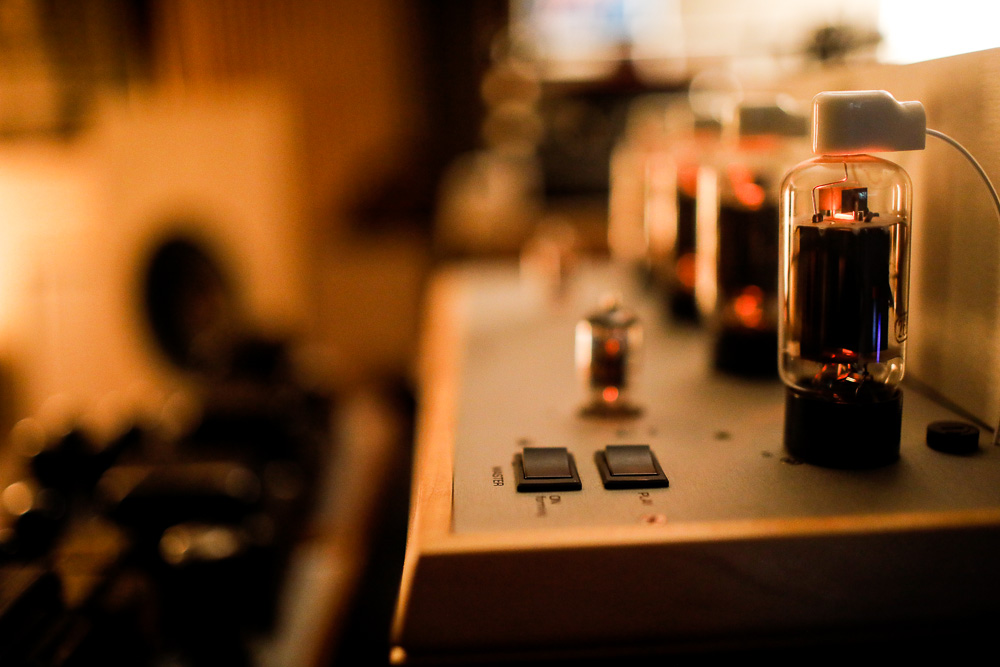
|
||||||||
|
Although Roger states in the user manual that there is no advantage with this amp being on and warming up, I’ve not found that to be the case. I think it clearly sounds better after an hour or two of use. Warmer and more comfortable to listen to; like many tube amps it sometimes feels slightly strident in the first few minutes after power on. |
||||||||
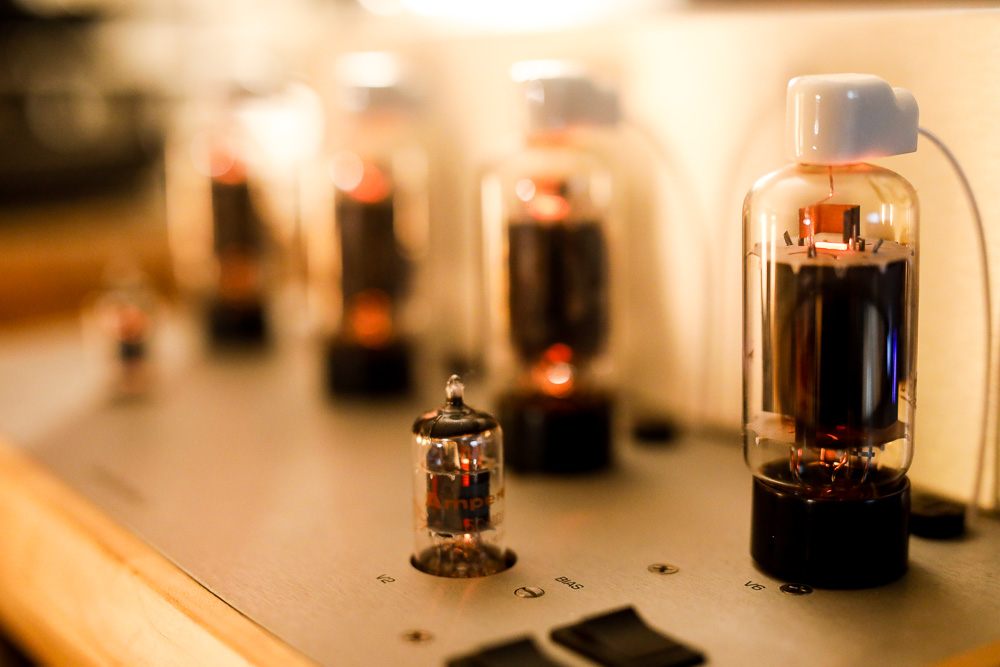
|
||||||||

|
||||||||
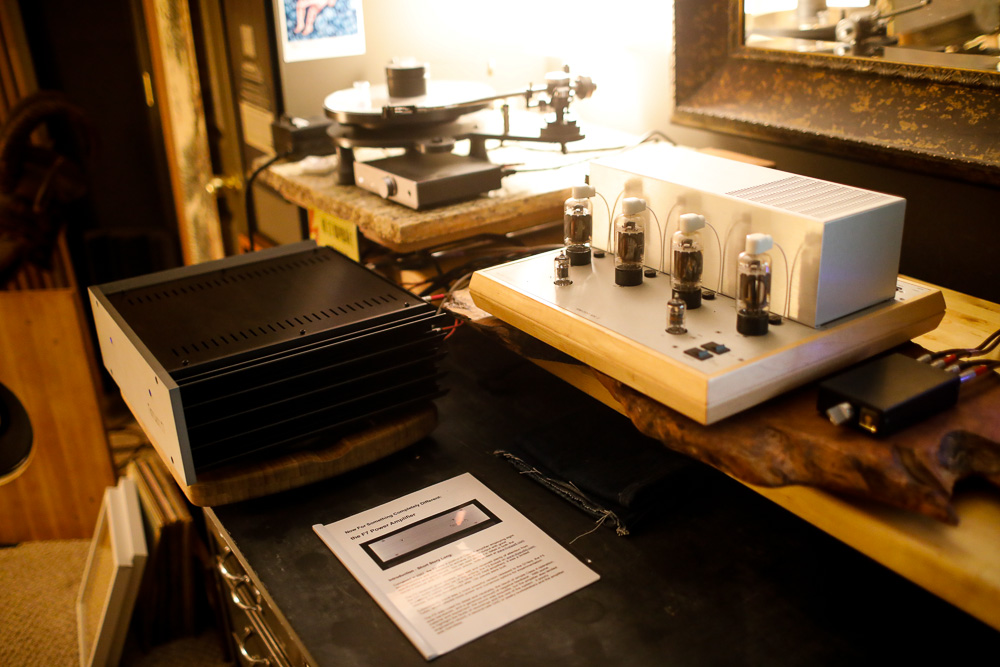
|
||||||||
|
The FirstWatt F7 made for an interesting comparison to the OTL-1, and they were less similar than I would have forecasted. Both are great sounding, detailed amps, but overall the OTL-1 is more pleasing sounding for me. I’d really love to hear one of the lower powered FirstWatt amps. |
||||||||
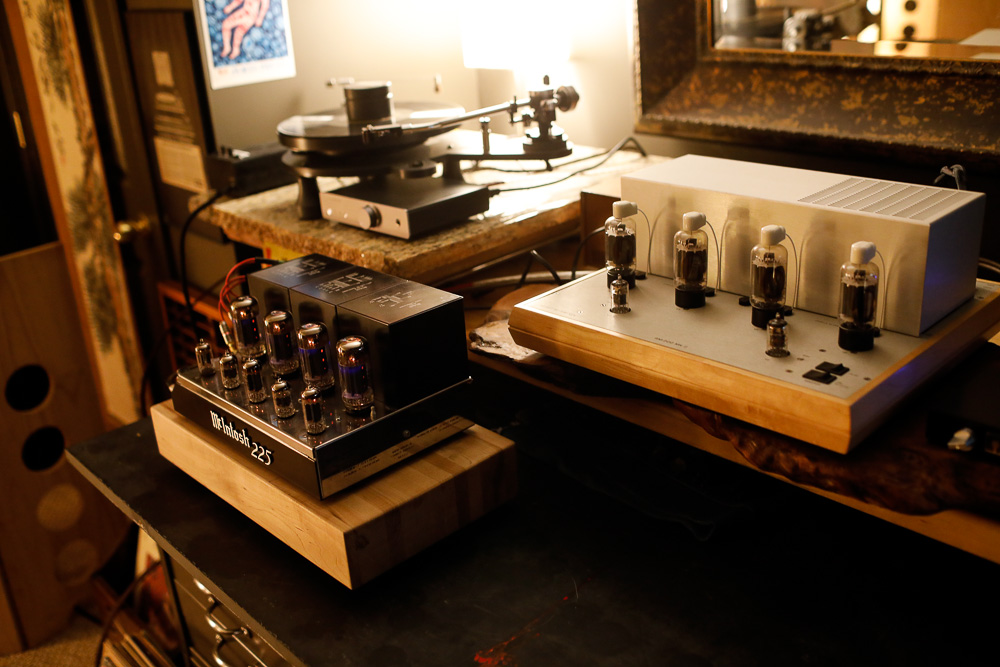
|
||||||||
|
The McIntosh 225 is decidedly romantic and laid back in comparison to the OTL-1. I like both, but for serious listening where the listener is very focused, the OTL-1 is in another league. |
||||||||
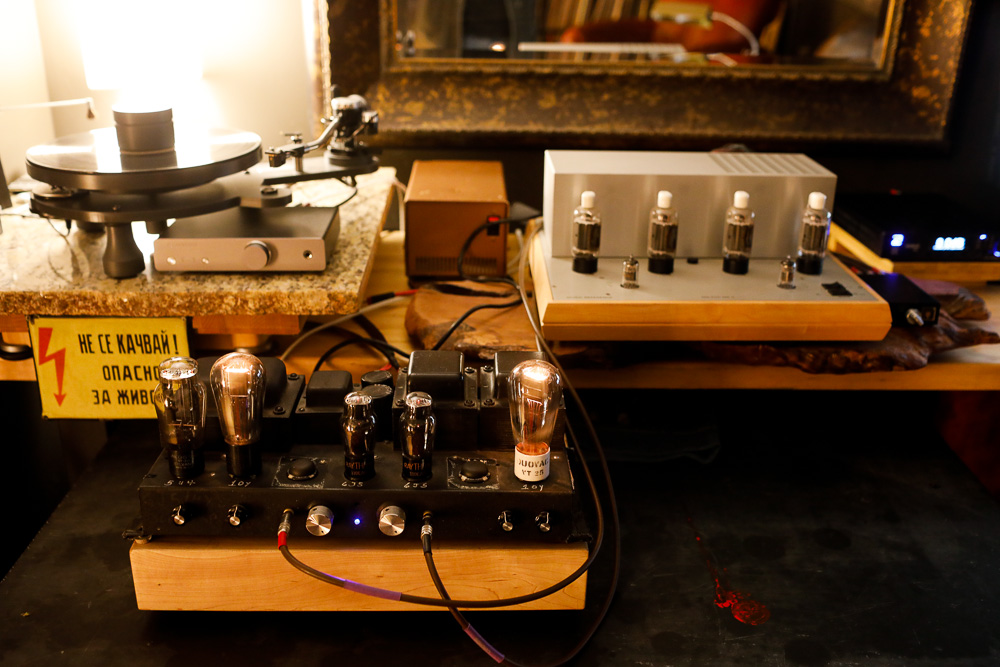
|
||||||||
|
The OTL-1 has a bigger sound than the Hogan 10Y amp. The Hogan maybe has a bit better placement in the soundstage, but the sound is wider and larger through the OTL-1. |
 |
|||||||
 |
 |
 |
 |
 |
|||
 |
|||||||
 |
|||||||